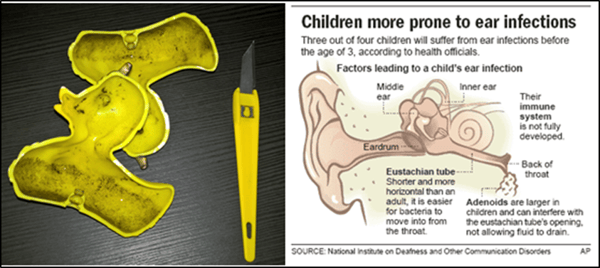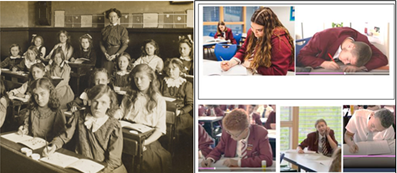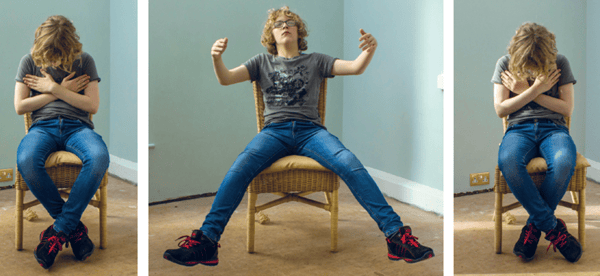What is Kinetic Chain Development
A child is born and the one sense they have myelinated and ready for use is sound, so they turn their head to a sound and their limbs move automatically as a reflex action. Over the next 7 years the child will, hopefully, pass through the stages of development to gain conscious control of all their motor skills – it is a very busy time in a child’s life.
Kinetic Chain Development is like a teamwork training for your body. It's all about making sure that every part of your body, from your toes to your fingertips, works together smoothly when you move. Just like in a well-coordinated dance, where each step follows the other, kinetic skills chain development helps your muscles and joints work together to perform tasks efficiently and without strain. It's the secret to being more agile, balanced, and powerful in your physical activities, whether you're playing sports or simply moving around in your daily life.
Challenges: Hearing, Motor Skills, and Kinetic Abilities
Unfortunately 70% of children 5 years of age or under get otitis media (inner ear infection), some children are born prematurely so have immature hearing, and others are born with auditory problems. Something stops that vital link between sound and movement and for many children that delays their proper development of motor skills and the kinetic chain that leads to the necessary posture and mid-line crossing skills for good sound and vision processing and for higher level cognitive skills.

Bath toys can hide fungus which keeps triggering ear infections
In the UK delays in motor skills are very common. In 2018 we at Fit 2 Learn CIC screened 400 children over 8 years of age attending schools in Croydon, South London – 90% had problems when we looked at
- Ability to skip forwards and backwards with opposing limbs
- Ability to stand on one leg for 30 seconds.
So we know there are endemic problems with bi-lateral integration of motor skills (being able to use left and right sides of body fluidly together), core strength and balance. The kinetic chain of development of motor skills means that it is important that every stage in a child’s development is checked to make sure that it is in place.
When we check motor skills at Fit 2 Learn we look through them in the following order:
- Primitive reflexes – has the child properly suppressed all their primitive reflexes? For our clients, it is very rare to find a person who has fully suppressed primitive reflexes.
- Conscious control of individual limbs.
- Developing bi-lateral integration of motor skills in four stages:
- Symmetrical bi-lateral integration e.g. clapping hands;
- Reciprocal bi-lateral integration (pedaling a bicycle);
- Asymmetrical bi-lateral integration e.g. one hand holds paper whilst one cuts i.e. one hand leads whilst the other supports;
- Crossing the mid-line to do any task with either hand/foot on both sides of the body.
- Developing coordinated movement with opposing limbs e.g. skipping with opposing limbs.
- Postural Control. We also look at postural control which is not fully established in a normal developing child until 7 years of age.
Postural Control for Kinetic Chain Development
Postural control is essential for a child to be able to hold their body upright and manage tools with their fine motor skills. In the UK starting formal education at 4 years of age damages the children because they are spending extended periods in postures that they cannot sustain, they lean off to one side, and that in turn damages their development of binocular vision and good long-term fine motor skills.
Poor posture also blocks good development of sound processing and voice projection skills. Unsuppressed primitive reflexes can be seen to impact on sound processing in terms of overflow gestures such as clamping the jaw to cope with mid-line crossing. This jaw clamping can suppress good sound processing and cause tinnitus and migraines.

Recent BBC documentaries capture many images of children with inefficient learning styles. Contrast that to a traditional Victorian classroom setting.
Final Words
Without good bi-lateral integration of gross motor skills and postural control children cannot develop good fine motor skills. The scale of the problems in the UK is so great, that we wrote a book, The Maze of Learning Developing Motor Skills, for all stakeholders to take them through each stage of motor skills development a child needs in place. The main body of the book has minimal text and lots of pictures – it is a user manual. At the rear of the book we have references to academic research in physiology, and sensory development also a few case studies showing how motor skills, sound processing and vision are inter-related.
More about Fit 2 learn and Charlotte Davies:
- At the Tomatis Convention, the Fit 2 Learn team were interviewed by Francoise Nicoloff, Tomatis Consultant, Australia about our book. The podcast of that interview can be found on this link: https://youtu.be/yVjvZK17vuQ

.png?width=1900&name=blog_banner%20(1).png)

